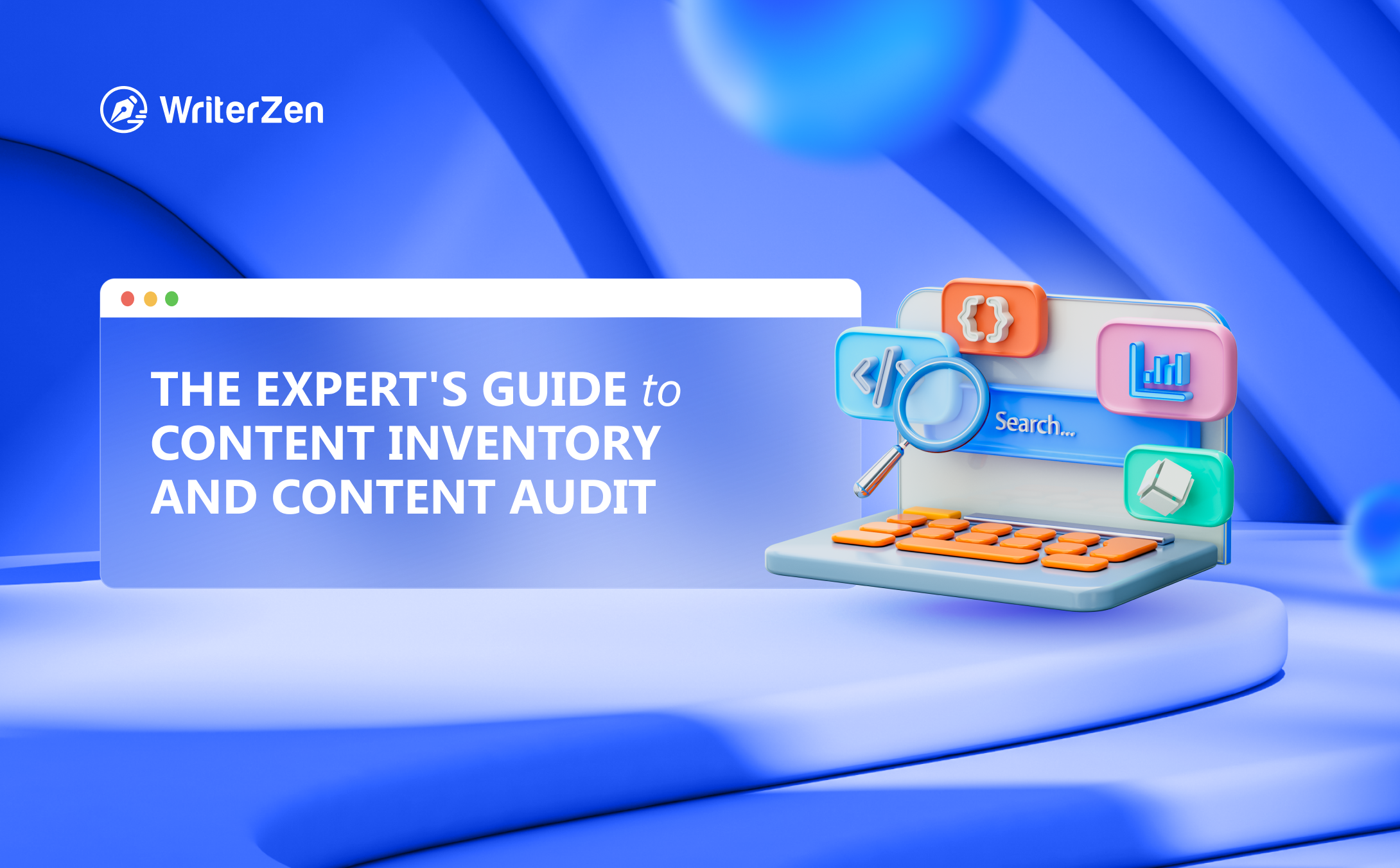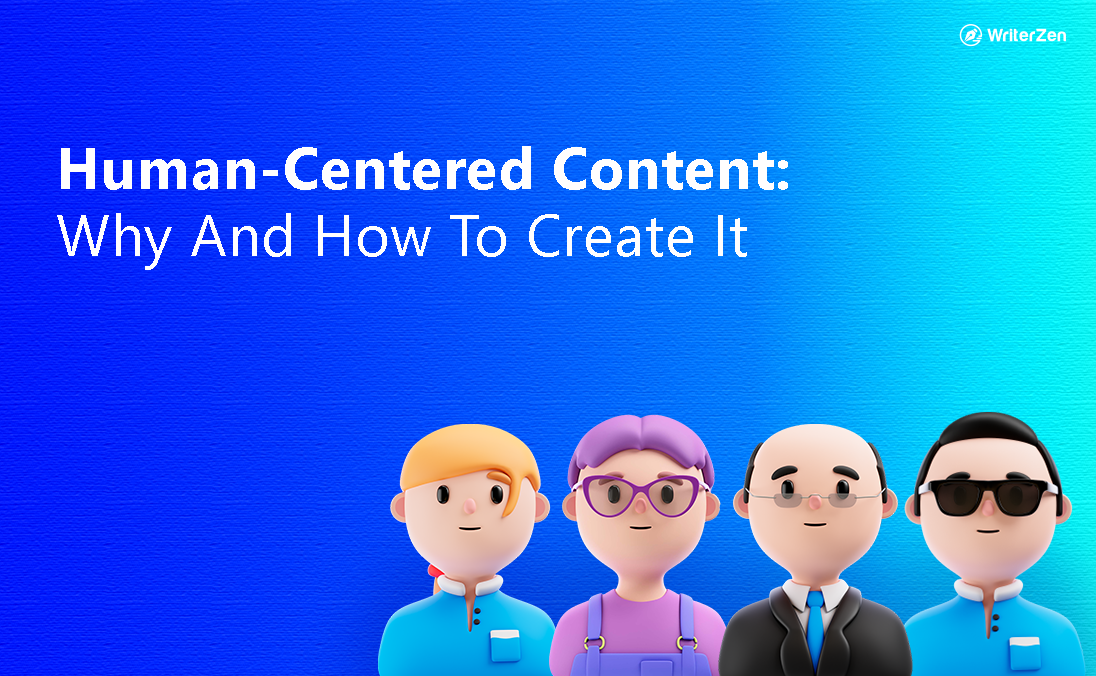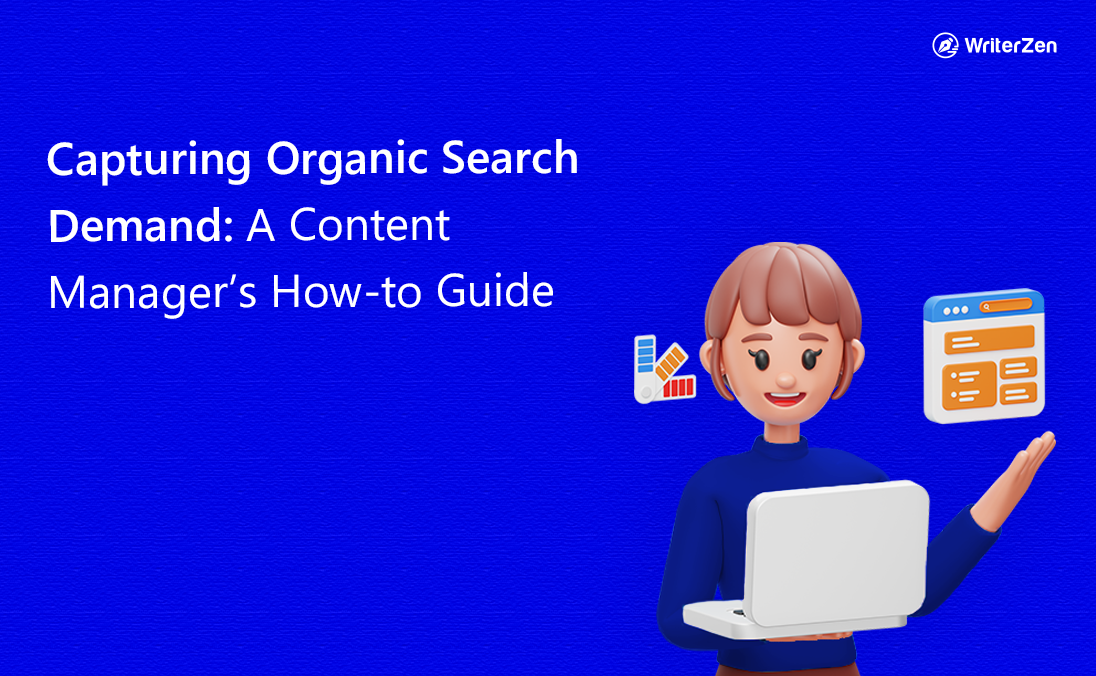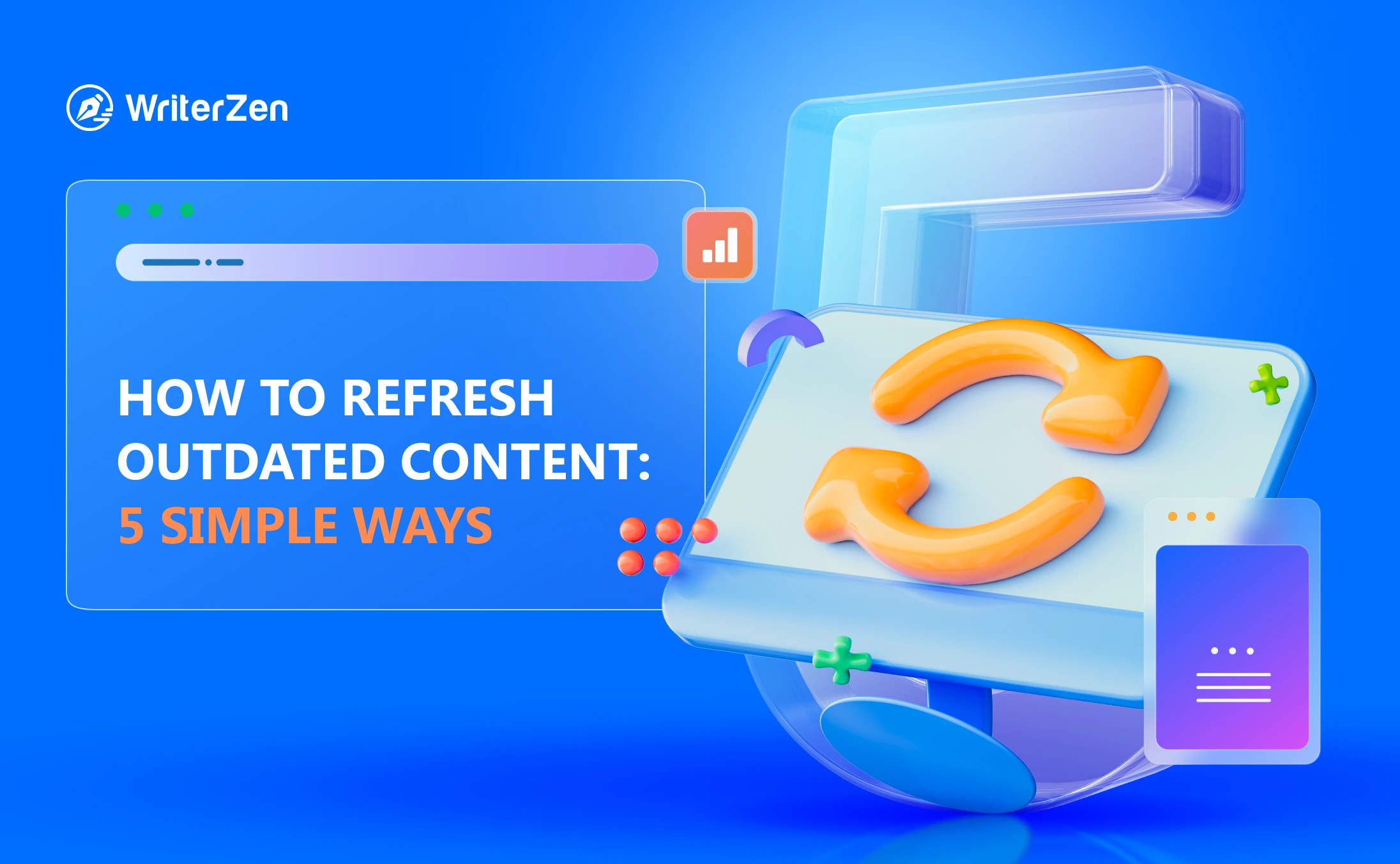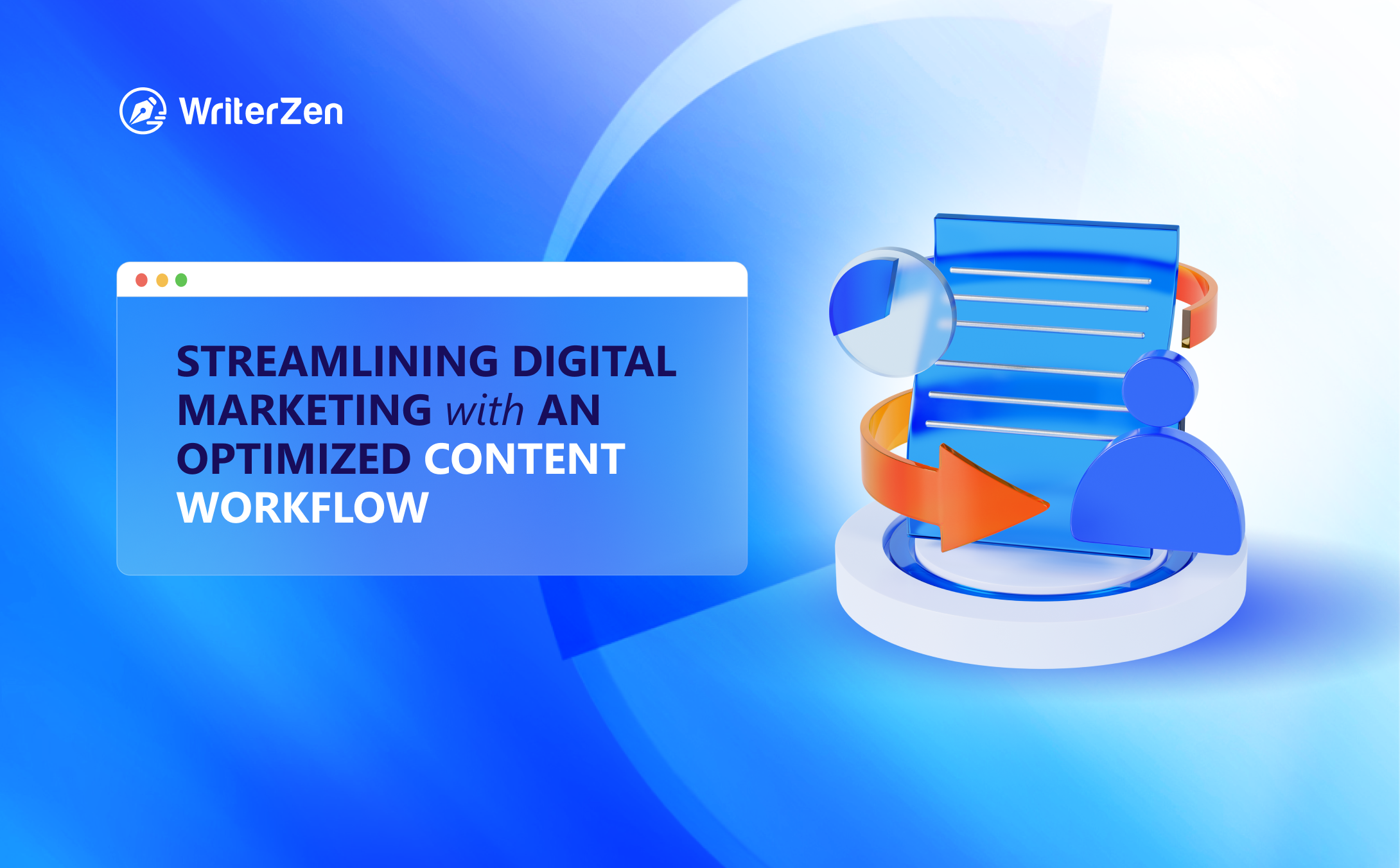Staying ahead of the curve requires a keen understanding of your content's performance. A content inventory and content audit are indispensable tools in the arsenal of any savvy marketer.
This comprehensive guide will delve deep into these concepts' significance and demonstrate their practical application.
Definition of Content Inventory and Content Audit
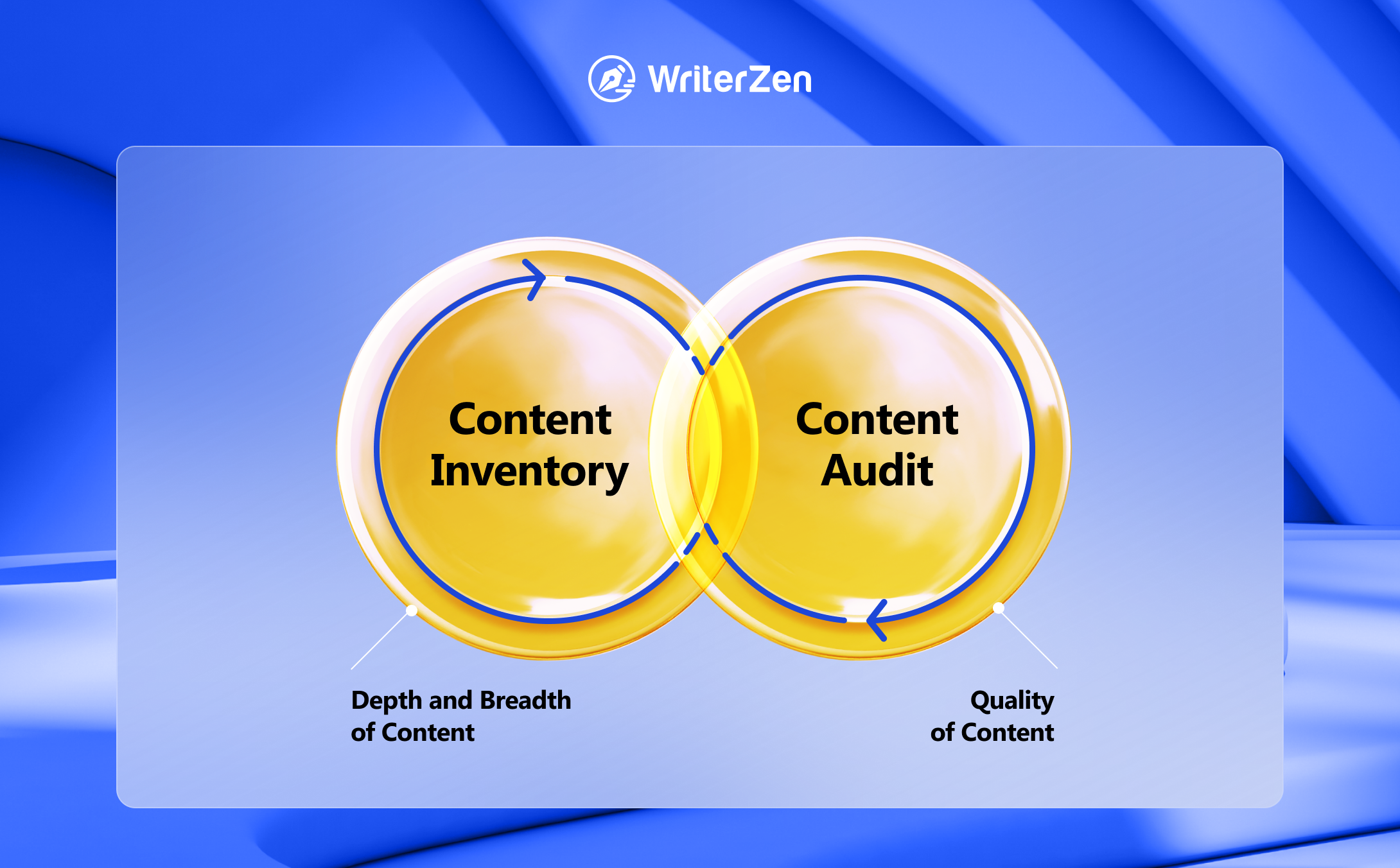
Definition of Content Inventory
A content inventory is a comprehensive list of all the content elements on your website, encompassing text, images, documents, and applications.
It contains various digital collateral, including blog posts, articles, images, videos, infographics, and more. Each item in this inventory is detailed in terms of its format, location, and metadata.
Typically, a content inventory should include essential information for each piece of content, such as a unique content ID, URL, file format, author or provider, physical location within the content management system, meta title and description, meta keywords, categories, or tags, and important dates like when it was created, revised, and accessed.
Content inventory is not limited to your website alone; it includes all the content distributed across various digital platforms, including your blog, social media, email marketing, and other content channels.
Definition of Content Audit
On the other hand, a content audit is a rigorous examination of your existing content. It involves a qualitative and quantitative assessment of each content piece to determine its relevance, performance, and alignment with your marketing goals.
Content audits break down your content to understand what's working and what's not. It goes beyond the mere collection of data and extends into the realm of analysis, strategy, and improvement.
The primary purpose of a content audit is to identify areas where content can be improved or updated, enhance the search engine ranking of web pages, and ensure that your website offers readers a seamless and error-free user experience. Through this process, organizations can refine their online content strategy, optimizing it for users and search engines.
Why Are Content Inventory and Content Audit Important?
It's critical to develop a thorough grasp of your existing content, an aspect that is sometimes overlooked, in order to develop an effective content strategy. A content inventory and audit will provide invaluable guidance and pave the way for more productive and successful content strategies.
Conducting both a content audit and a content inventory must be completed before beginning the development of a content strategy or making significant adjustments to your current digital material. These initial actions set the groundwork for a data-driven and strategic approach to content management.
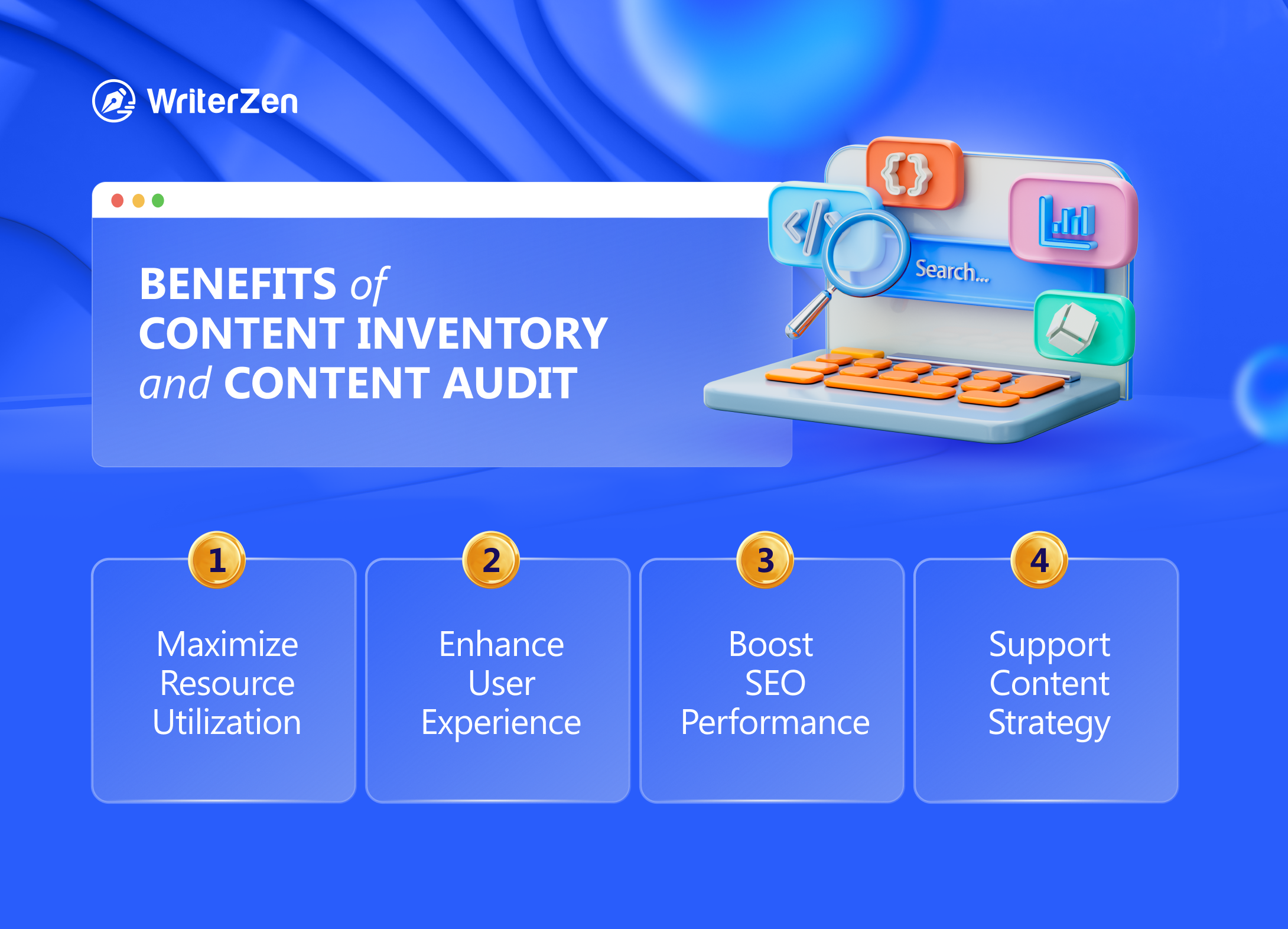
Maximizing Resource Utilization
In the digital landscape, resources are precious commodities. A well-structured content inventory allows you to identify redundant or outdated content, freeing up resources for more impactful endeavors.
When you know your content, you can allocate your resources more efficiently.
For instance, imagine discovering that you have multiple blog posts covering the same topic but with slight variations. By identifying this through your content inventory, you can consolidate these into one comprehensive piece, saving much time and effort.
Enhancing User Experience
A cluttered and disorganized website can deter visitors and harm user experience. Content inventory ensures that your content is accessible and easy to find, while a content audit helps you weed out content that might confuse or frustrate your audience.
Having outdated product information buried deep within your website will confuse potential customers. Content inventory would help you locate this outdated content, while content audit would guide you in removing or updating it, ultimately leading to a smoother user experience.
Boosting SEO Performance
Search engines reward high-quality, relevant content. Through a content audit, you can uncover SEO gaps, identify keyword optimization opportunities, and enhance your website's search engine visibility. This attracts more organic traffic and improves your website's overall authority.
Incorporating SEO best practices into your content audit can make a substantial difference. By analyzing which keywords are performing well and which are not, you can adjust your content strategy to focus on what resonates with your audience.
Supporting Content Strategy
An effective content strategy is built on a foundation of data and insights. Content inventory and content audit provide the data necessary for informed decision-making.
They help you identify content gaps, understand your audience's preferences, and tailor your content strategy.
Through these processes, you can pinpoint outdated or low-performing content, optimize keyword usage, improve internal linking, and ensure that your website is user-friendly, all of which are crucial factors in boosting search engine rankings and enhancing overall SEO performance.
Do I Need Both a Content Inventory and a Content Audit?
Absolutely! Content inventories and content audits are complementary processes, each crucial in optimizing digital marketing efforts.
Without a comprehensive list of your content assets, a content audit lacks the foundation to be effective. It ensures that you don't overlook any valuable resources during the audit.
For example, consider a situation where you conduct a content audit without an inventory. You might miss essential content pieces simply because you weren't aware they existed. This could lead to incomplete analysis and less informed decisions.
A content audit, on the other hand, is where the real magic happens. It analyzes the quality, performance, and relevance of your content. Without a content audit, your Content Inventory is just a list; it won't tell you which content to keep, improve, or discard.
Let's delve deeper into these processes and outline the steps to conduct them effectively.
Step-by-Step Guide for Content Inventory and Auditing
Now that we've established the importance of a content inventory and content audit, let's break down the steps to conduct each process effectively.
How to Build a Content Inventory
Establishing clear goals and defining the audit scope beforehand is crucial to creating an effective content inventory. Doing this helps streamline the process and prevent it from becoming overwhelming.
-
Identify your content sources: List all the platforms and channels where your content is hosted, including your website, blog, social media, email marketing, and other distribution channels.
-
Compile a detailed list: Create a comprehensive list of all your content assets, categorizing them by type (e.g., blog posts, videos, infographics) and noting their location. Be thorough, as missing a single piece of content can lead to incomplete insights.
-
Gather metadata: Collect relevant metadata for each content piece. This includes publication date, author, keywords, and other data that might be useful in your analysis. Metadata will be crucial when evaluating content performance and deciding during the content audit phase.
-
Assess content quality: Assign a quality score to each content piece based on accuracy, relevance, and engagement metrics. This initial assessment will help you identify content needing further analysis during the content audit.
-
Organize your inventory: Arrange your content inventory in a structured manner, making it easy to navigate and reference. Consider using spreadsheet software or dedicated content management tools for this purpose.
How to Conduct a Content Audit
-
Define your audit goals: Determine what you want to achieve with your content audit. It could be improving SEO, increasing engagement, or aligning content with your brand message. Setting clear objectives will guide your analysis.
-
Categorize content: Group your content into categories to analyze it more effectively. Categories might include blog posts, product pages, case studies, infographics, videos, and more. Categorization helps you identify trends and opportunities within specific content types.
-
Evaluate content performance: Assess each content piece against predefined criteria. Consider factors like traffic, engagement (likes, shares, comments), bounce rate, and conversion rates. Tools like Google Analytics can provide valuable insights into your content's performance.
-
Identify content gaps: Determine if topics or content types are missing from your current inventory but align with your audience's needs and interests. Content gaps represent opportunities for expansion and improvement.
-
Analyze SEO performance: If improving SEO is one of your audit goals, delve into SEO-specific metrics. Examine keyword rankings, click-through rates, and organic search traffic for individual content pieces. Identify keywords that are performing well and those that need optimization.
-
Assess content alignment with goals: Evaluate how well each content piece aligns with your marketing and business goals. Does it contribute to lead generation, brand awareness, or customer education? Identify content that isn't aligned with your objectives.
-
Make data-driven decisions: Based on the audit findings, decide whether to update, repurpose, consolidate, or remove content. Create an action plan to implement these changes, including timelines and responsible team members.
-
Prioritize content improvements: Not all content requires the same level of attention. Prioritize content improvements based on performance, strategic importance, and available resources. Focus on the content with the greatest potential for impact.
-
Implement changes: Execute the action plan to enhance your content. This may involve rewriting, redesigning, optimizing for SEO, or even archiving content. Ensure that changes align with your overall content strategy.
-
Monitor and iterate: Content audits are not one-time tasks. Regularly monitor your content's performance, make improvements, and iterate your strategy based on ongoing data. Continuously refine your content inventory to keep it up to date.
Final Thought
A content inventory and content audit are indispensable tools for success; these processes systematically manage your content assets, enhance user experience, boost SEO performance, and support your content strategy.
By diligently conducting a content inventory and a content audit, you can ensure that your digital marketing efforts remain data-driven and aligned with your business goals. Your content will become a strategic asset that consistently delivers results, enhances user experiences, and drives your digital success.


